Eager to take your content to the next level and drive exceptional results for your business?
Crafting compelling copy is essential for businesses and marketers, as it enables them to create engaging and persuasive content that resonates with the target audience and drives conversions.
To achieve this, understanding the audience’s needs and values, developing a unique voice, using strategic language, incorporating storytelling and visuals, conducting A/B testing, and measuring success are crucial elements. By mastering these skills, businesses can enhance the customer experience and drive success.
Table of Contents
- Introduction to Crafting Compelling Copy
- Develop a Clear Understanding of Your Target Audience
- Create a Unique Voice for Your Message
- Write Attention-Grabbing Headlines and Subheadings
- Leverage the Power of Storytelling
- Use Strategic Language to Connect with Readers
- Optimize Your Content for Search Engines
- Include Relevant Visual Elements in Your Copywriting
- Utilize A/B Testing to Refine Messaging
- Measure the Success of Your Copywriting Efforts
- Final Thoughts
Introduction to Crafting Compelling Copy
Crafting compelling copy is one of the most essential skills for any successful business or marketer. It involves creating engaging and persuasive content that resonates with your target audience, builds trust, and encourages conversions. Crafting compelling copy requires understanding your target audience’s needs and wants, utilizing the power of storytelling, optimizing content for search engines, and using strategic language to connect with readers. This article will provide an overview of the fundamentals of crafting compelling copy so you can create content that drives results.
Developing a Clear Understanding of Your Target Audience
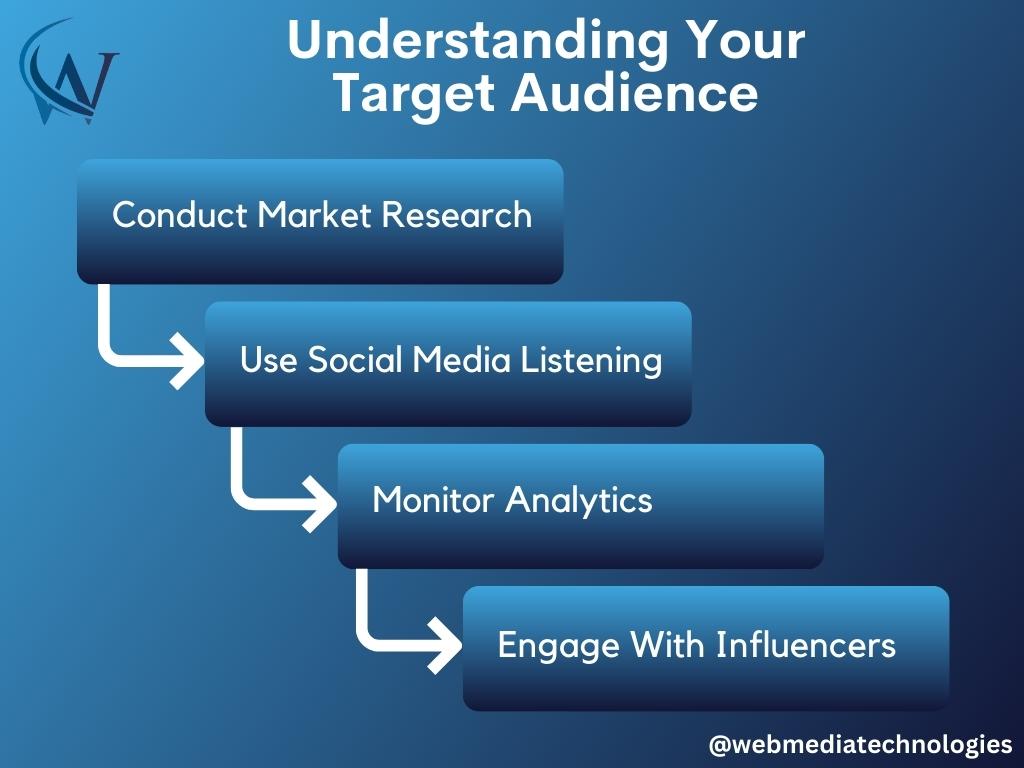
To create effective copy, it is important to understand the target audience’s demographics, lifestyle, interests, and values. Identifying their pain points and struggles is crucial. By tailoring the message specifically to the audience, it will resonate more authentically and effectively than generic marketing campaigns or templates.
- Conduct market research: Start by collecting data and information about your target audience. This can include demographics, interests, purchasing behaviors, and needs. Use tools like surveys, interviews, or online analytics to gather the necessary data.
- Create buyer personas: Develop detailed profiles of your ideal customers, based on the research conducted. This will help you visualize and understand their motivations, challenges, and preferences. Use these personas to tailor your marketing strategies and messages accordingly.
- Use social media listening: Monitor conversations and discussions on social media platforms that are relevant to your target audience. This will allow you to understand their opinions, interests, and pain points. Engage with them directly to gain deeper insights.
- Analyze competitors: Study your competitors who are targeting a similar audience. Identify their strengths, weaknesses, and strategies. This analysis can provide insights into what appeals to your target audience and help you differentiate yourself in the market.
- Conduct surveys and focus groups: Organize surveys or focus groups to directly interact with your target audience. Ask them questions about their preferences, expectations, and experiences related to your product or service. This firsthand feedback can be invaluable in understanding their needs.
- Analyze customer feedback: Regularly review customer feedback, such as reviews, comments, and emails. This can help you identify common issues, areas for improvement, and what aspects of your product or service resonate the most with your target audience.
- Monitor website and social media analytics: Utilize analytics tools to track website traffic, conversions, and engagement on social media platforms. These metrics can provide insights into what content or features are most popular, helping you better understand your target audience’s preferences.
- Engage with influencers: Collaborate with influencers who have a significant following among your target audience. By working with them, you can gain direct access to their followers and understand their interests and preferences through the influencer’s content and engagement.
- Attend industry events and trade shows: Participate in industry events and trade shows to interact with your target audience face-to-face. This will give you the opportunity to have conversations, gather feedback, and observe their behaviors and reactions.
- Continuously update your understanding: Keep up with market trends, technological advancements, and changes in consumer behavior. Regularly review and update your understanding of your target audience to ensure your strategies remain relevant and effective.
Creating a Unique Voice for Your Message
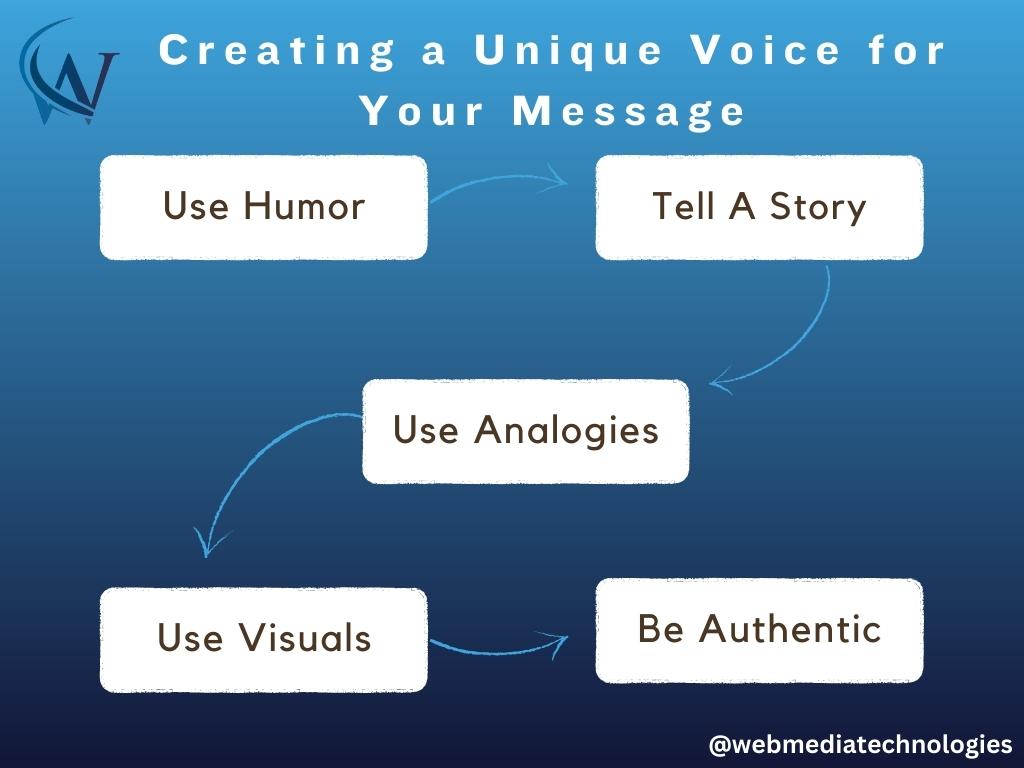
Once you know your target audience, you must create a distinct voice for your message that reflects the brand’s tone and values while emotionally connecting with readers. This voice should be consistent across all platforms to build customer loyalty and increase conversion rates. It should also differentiate from competitors while staying true to the company’s branding guidelines to be recognizable by existing and potential customers.
- Use humor: Incorporate funny anecdotes, jokes, or puns to make your message stand out and engage your audience in a lighthearted way.
- Tell a story: Narrate a personal or relatable story that conveys your message effectively. This storytelling approach can captivate your audience and make your message more memorable.
- Use analogies: Use creative analogies to explain complex concepts or ideas in a simpler and more relatable manner. This can help your audience understand your message better and make it more memorable.
- Incorporate visuals: Use visually appealing elements such as images, infographics, or videos to enhance your message. Visuals can create a unique and engaging voice that stands out from traditional text-based messages.
- Use metaphors: Incorporate metaphors to convey your message in a more imaginative and creative way. This can help you connect with your audience on a deeper level and make your message more impactful.
- Infuse emotions: Use emotive language or storytelling techniques to evoke emotions in your audience. Creating an emotional connection can make your message more powerful and memorable.
- Incorporate personal experiences: Share personal experiences or anecdotes that align with your message. This can help humanize your message and make it more relatable and authentic.
- Be authentic and genuine: Avoid using generic or cliché phrases and instead, be yourself. Show your personality and let your unique voice shine through your message. This authenticity will make your message more memorable and engaging.
- Use unexpected language or wordplay: Play with words, use unexpected language, or create new phrases to add a touch of creativity and originality to your message. This can make it more interesting and memorable for your audience.
- Incorporate interactive elements: Engage your audience by incorporating interactive elements such as polls, quizzes, or surveys. This not only makes your message more interactive but also allows your audience to actively participate and engage with your content.
Writing Attention-Grabbing Headlines and Subheadings
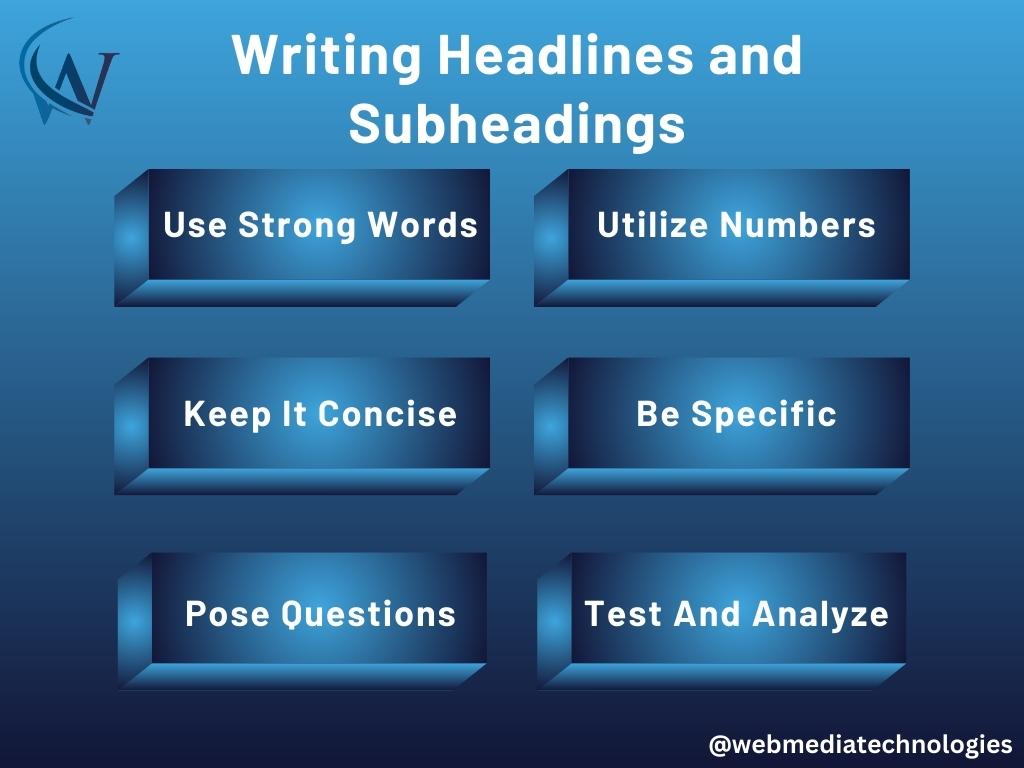
Headlines are meant to lure readers into reading more and can also serve as powerful calls-to-action. They should be short and attention-grabbing, accurately reflecting the content without being clickbait. Avoid sensationalized words. Subheadings should provide more detail but remain concise. Strategic keyword placement in both headlines and subheadings is important for search engine optimization.
- Use strong and powerful words: Incorporate words that evoke emotions, curiosity, or urgency to capture the reader’s attention instantly.
- Keep it concise: Create headlines and subheadings that are short and to the point. Avoid using unnecessary words that may dilute the impact of the message.
- Pose questions: Engage the reader by asking thought-provoking questions that make them curious to find out the answer or learn more about the topic.
- Utilize numbers: Include specific numbers in your headlines or subheadings to make them more attention-grabbing. For example, “5 Proven Strategies for Effective Time Management.”
- Be specific and concrete: Provide specific details or examples in your headlines and subheadings to give readers a clear idea of what they can expect from the content.
- Create a sense of urgency: Use action-oriented language and time-sensitive phrases to convey a sense of urgency, encouraging readers to take immediate action or read further.
- Play with humor or puns: Infuse humor or clever wordplay into your headlines and subheadings to add a touch of personality and make them memorable.
- Include power words: Incorporate impactful words that resonate with your target audience and convey the benefits or value they will receive from reading the content.
- Use contrast or contradiction: Highlight the difference between two contrasting ideas or present a contradiction to pique the reader’s curiosity and make them want to explore further.
- Test and analyze: Experiment with different headline and subheading variations to see what resonates best with your audience. Analyze the performance of each version to refine your approach and optimize future content.
Leveraging the Power of Storytelling

Stories have been used for centuries because they are highly effective in delivering messages. People remember stories better than facts alone because humans naturally process information through narratives.
To create compelling copy, it is recommended to include story elements in headlines, subheadings, and body paragraphs. This can be achieved by incorporating real-life examples and mixing them with facts and figures. This approach makes information easier to understand and adds credibility through shared personal experiences.
- Create a storytelling campaign: Develop a series of stories that highlight the impact and success of your product or service. Share these stories through various channels, such as social media, blog posts, videos, or podcasts, to engage and inspire your audience.
- Collaborate with influencers: Partner with influential individuals who have a talent for storytelling, such as bloggers or YouTubers. Let them share their personal experiences with your brand, product, or service, thus amplifying the power of storytelling to a wider audience.
- Use customer testimonials: Encourage your satisfied customers to share their success stories and experiences with your brand. Utilize these testimonials in your marketing materials, website, or social media platforms to create an emotional connection with potential customers.
- Develop a brand story: Craft a compelling narrative that represents your brand’s values, mission, and vision. Share this story consistently across all touchpoints, including your website, packaging, and marketing campaigns, to create a sense of identity and loyalty among your customers.
- Incorporate storytelling in product demonstrations: Instead of simply showcasing features and benefits, tell a story that demonstrates how your product or service has positively impacted someone’s life. This approach can make the demonstration more relatable and memorable.
- Host storytelling events: Organize events where individuals can share personal stories related to your industry or brand. This could be in the form of open mic nights, panel discussions, or workshops. These events create a sense of community and allow for authentic connections to be made.
- Create an interactive storytelling experience: Develop an immersive experience, such as a virtual reality or augmented reality game, where users can actively participate in the storytelling process. This can deepen engagement and enhance the emotional connection with your brand.
- Incorporate storytelling in employee training: Use storytelling techniques to train and educate your employees. By sharing stories of successful customer interactions or problem-solving scenarios, you can inspire and motivate your team to provide exceptional customer service.
- Support a cause: Align your brand with a cause or social issue and share stories that highlight the impact your company is making. This can help build a positive brand image and attract customers who are passionate about making a difference.
- Utilize user-generated content: Encourage your customers to share their own stories or experiences with your brand on social media. Retweet, repost, or feature these stories on your website to showcase the power of storytelling and the positive impact your brand has on people’s lives.
Using Strategic Language To Connect With Readers
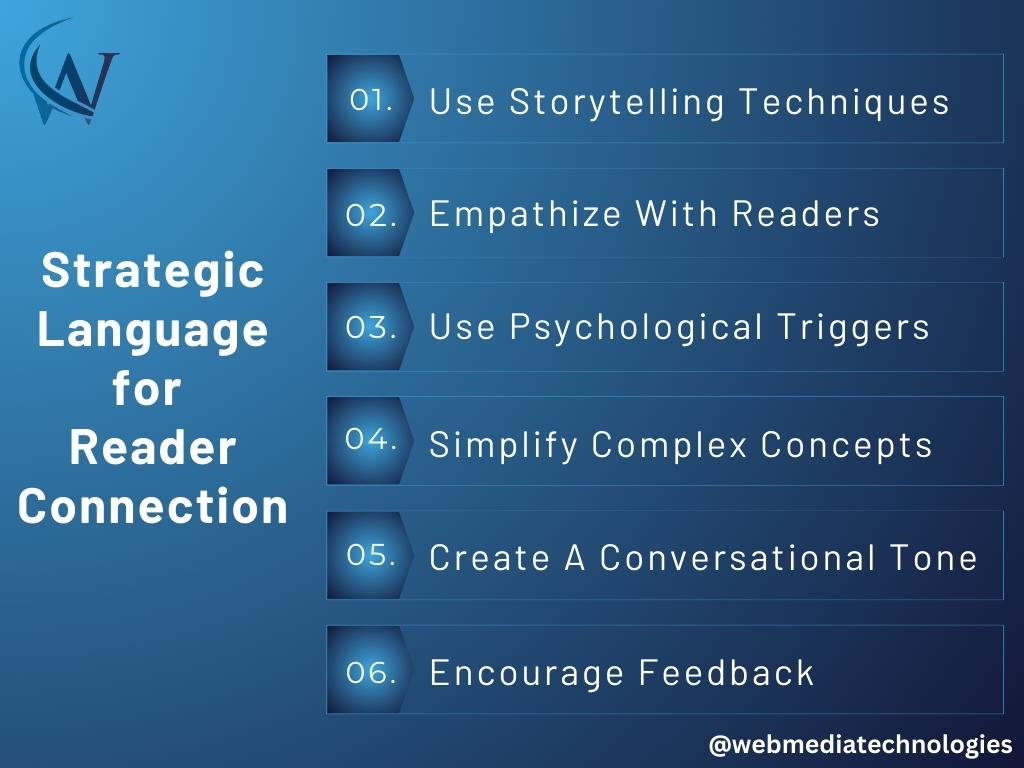
Strategic language involves both careful word selection and an understanding of how different types of language can affect readers. Certain words can elicit emotions or curiosity, while others can encourage action.
For instance, using emotionally charged language like “unbeatable value” can resonate more with readers than simply stating “great value.” Additionally, avoiding industry jargon makes information more accessible to a broader audience who may not be familiar with technical terms.
- Utilize storytelling techniques: Incorporate narratives and anecdotes to captivate readers and create an emotional connection. This approach can make the content more relatable and engaging.
- Tailor the language to the target audience: Understand the demographics, interests, and preferences of your readers to create content that resonates with them. Using strategic language that speaks directly to their needs and desires can establish a stronger connection.
- Communicate clear benefits and value: Use persuasive language to highlight the benefits that readers can gain from engaging with your content. Show them how your message or product can solve their problems or improve their lives.
- Empathize with readers: Demonstrate understanding and empathy towards readers’ challenges and experiences. Use strategic language that acknowledges their struggles and offers support or solutions.
- Use psychological triggers: Incorporate strategic language that taps into emotions and motivations. For example, using words like “exclusive,” “limited time offer,” or “join our community” can create a sense of urgency and exclusivity, encouraging readers to take action.
- Simplify complex concepts: If your content deals with technical or complex subjects, use strategic language to break down the information into simpler terms. This can help readers grasp the content more easily and foster a stronger connection.
- Create a conversational tone: Use language that feels approachable and friendly, as if you’re having a personal conversation with the reader. This can make them feel more comfortable and connected to your message.
- Incorporate personalization: Use strategic language that acknowledges the reader as an individual. Address them by their name or use words like “you” and “your” to create a more personalized experience.
- Use social proof: Incorporate strategic language that showcases positive reviews, testimonials, or success stories from other readers or customers. This can build trust and credibility, making readers more likely to connect with your message.
- Encourage interaction and feedback: Use strategic language that invites readers to share their thoughts, opinions, or experiences. This can create a sense of community and engagement, fostering a stronger connection with your readers.
Optimizing Your Content For Search Engines
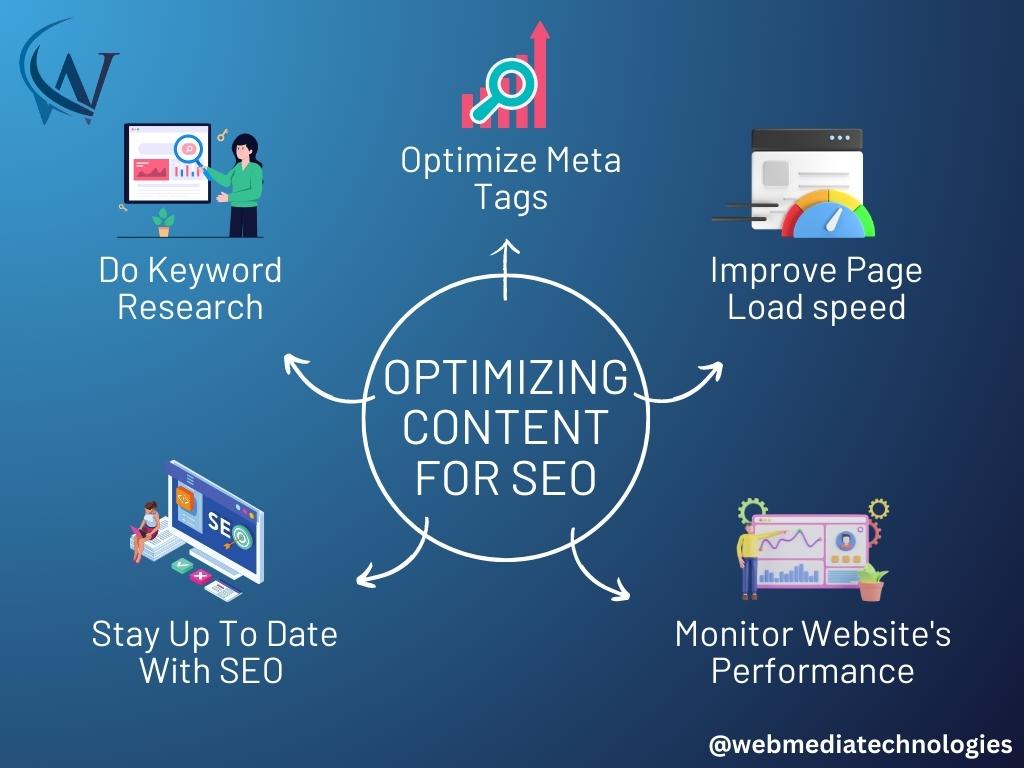
SEO is crucial for online visibility, especially when competing for organic traffic on search engines. Use relevant tags and keywords that users search for.
Research popular keywords using tools like Google Trends & Keyword Planner. Optimize titles and meta descriptions to stand out on SERPs and outperform competitors who haven’t properly optimized.
- Conduct keyword research: Research and identify the most relevant keywords and phrases that your target audience is likely to search for. Incorporate these keywords strategically throughout your content to improve search engine visibility.
- Develop high-quality, informative content: Create well-written, engaging content that provides value to your readers. This not only improves user experience but also increases the chances of other websites linking back to your content, which can boost your search engine rankings.
- Optimize meta tags: Pay attention to your title tags, meta descriptions, and URLs. Ensure they are descriptive, contain relevant keywords, and accurately summarize the content on your page. This helps search engines understand what your content is about and improves click-through rates from search engine results pages.
- Optimize images and multimedia: Optimize your images by using descriptive file names and alt tags that include relevant keywords. This can help your content appear in image search results and improve overall search engine visibility.
- Improve page load speed: Optimize your website’s loading speed by minimizing code, compressing images, and utilizing browser caching. Faster loading times improve user experience and can positively impact search engine rankings.
- Utilize header tags: Organize your content using header tags (H1, H2, H3, etc.) to structure your content and make it easier for search engines to understand. Include relevant keywords in these headers to further optimize your content for search engines.
- Include internal and external links: Incorporate internal links within your content to help search engines crawl and index your website more efficiently. Additionally, include external links to reputable sources that provide additional value and credibility to your content.
- Optimize for mobile devices: With the majority of internet searches now happening on mobile devices, it is crucial to ensure your content is mobile-friendly. Use responsive design, optimize images for mobile viewing, and ensure text is easily readable on smaller screens.
- Monitor and analyze your website’s performance: Regularly review your website’s analytics to identify which content is performing well and which needs improvement. Use this information to make data-driven decisions and continually optimize your content for search engines.
- Stay up to date with SEO best practices: SEO algorithms and guidelines are constantly evolving. Stay informed about the latest trends and best practices to ensure your content remains optimized for search engines.
Including Relevant Visual Elements In Your Copywriting

Visual elements, such as infographics, videos, images, and GIFs, improve the reading experience by breaking up text-based posts. They also provide additional context to strengthen arguments, increasing the likelihood of persuading readers to take desired actions. Additionally, visuals contribute to better SEO by attracting organic traffic and generating leads and sales for the website.
- Infographics: Create visually appealing infographics that summarize key points or data in your copy. This can help readers understand complex information more easily and make your content more engaging.
- Charts and graphs: Incorporate relevant charts and graphs into your copy to visually represent data or trends. This can help support your arguments or claims and make your content more credible.
- Images and photographs: Include relevant images or photographs that enhance the text and make it more visually appealing. This can help break up large blocks of text and create a more enjoyable reading experience.
- Icons and symbols: Use icons and symbols to represent concepts or ideas in your copy. This can make your content more visually interesting and help readers quickly grasp the main points.
- Visual metaphors: Use visual metaphors to make your copy more memorable and impactful. For example, using an image of a light bulb to represent a new idea or a puzzle piece to represent problem-solving.
- Videos and animations: Incorporate videos or animations that further explain or demonstrate your message. This can be particularly useful for complex concepts or processes that are better understood through visual representation.
- Typography and formatting: Pay attention to the layout, font, and color choices in your copy to make it visually appealing. Use headings, subheadings, and bullet points to organize information and make it easy to scan.
- Interactive elements: Include interactive elements like quizzes, polls, or interactive diagrams to engage readers and make your content more memorable.
- GIFs and memes: Incorporate relevant GIFs or memes to add humor or personality to your copy. This can help create a more lighthearted and relatable tone
- Data visualization: Use data visualization techniques to present complex data in a more digestible and visually appealing way. This can include interactive charts, heatmaps, or timelines.
Utilizing A/B Testing To Refine Messaging
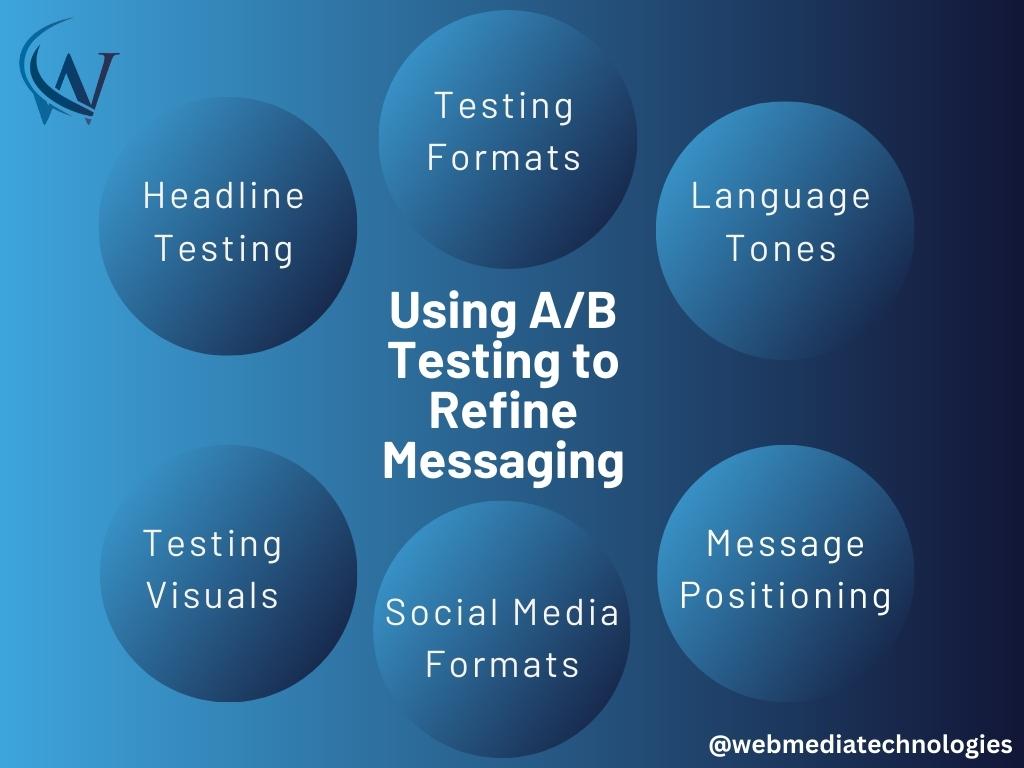
A/B testing is a method used to compare two versions of a design to determine which one performs better. It is commonly used in various marketing materials such as websites, emails, and direct mail. Marketers can measure and track the performance of each version before deciding which one to keep. The final version is chosen based on criteria like conversion rate, quality leads generated, and cost per lead.
- Testing different headlines: A/B testing can be used to compare different headlines to see which one resonates better with the target audience. This can help refine messaging by identifying the most compelling and attention-grabbing headline.
- Testing different call-to-action (CTA) phrases: A/B testing can be used to compare different CTAs to determine which one generates more conversions. This can help refine messaging by finding the most persuasive and effective CTA phrase.
- Testing different email subject lines: A/B testing can be used to test different subject lines in email marketing campaigns to see which one leads to higher open rates. This can help refine messaging by identifying the subject lines that resonate best with the target audience.
- Testing different content formats: A/B testing can be used to compare different content formats, such as long-form articles versus short-form articles or videos versus infographics, to see which format is more engaging to the target audience. This can help refine messaging by determining the most effective content format for conveying the desired message.
- Testing different language tones: A/B testing can be used to test different language tones, such as formal versus informal or friendly versus professional, to see which tone resonates better with the target audience. This can help refine messaging by identifying the most appropriate and persuasive tone for the desired message.
- Testing different visuals: A/B testing can be used to compare different visual elements, such as images, colors, or design layouts, to see which visual combination is more appealing to the target audience. This can help refine messaging by finding the most visually appealing and attention-grabbing design for conveying the desired message.
- Testing different social media post formats: A/B testing can be used to test different post formats, such as text-only posts versus posts with images or posts with short captions versus posts with longer captions, to see which format generates more engagement. This can help refine messaging by determining the most effective social media post format for delivering the desired message.
- Testing different message positioning: A/B testing can be used to compare different positioning strategies, such as emphasizing price versus emphasizing quality, to see which positioning strategy resonates better with the target audience. This can help refine messaging by identifying the most effective way to position the product or service in the market.
- Testing different testimonials or social proof elements: A/B testing can be used to test different testimonials or social proof elements, such as customer reviews or case studies, to see which ones have a greater impact on the target audience. This can help refine messaging by identifying the most persuasive and influential testimonials or social proof elements to include in the messaging.
- Testing different messaging for different target segments: A/B testing can be used to test different messaging variations tailored to different target segments or buyer personas. This can help refine messaging by understanding which messaging resonates best with each specific segment, allowing for more personalized and effective communication.
Measuring The Success Of Your Copywriting Efforts
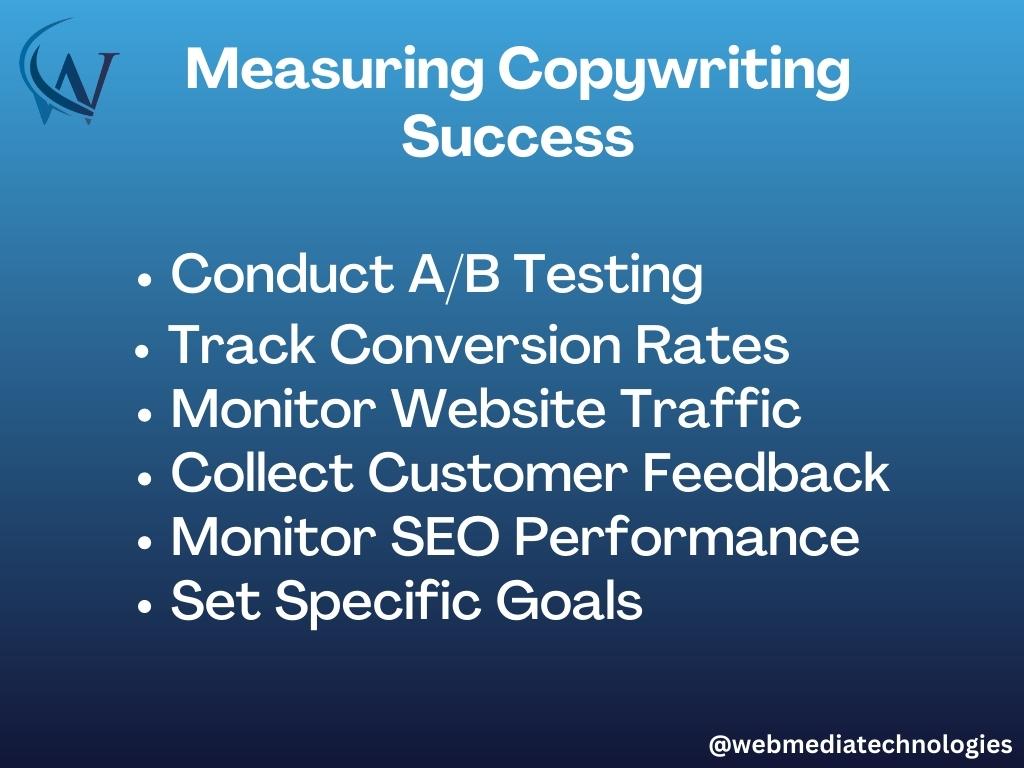
Measuring the success of copywriting efforts is crucial to maintain effective strategies. Key metrics such as page views, shares, comments, conversions, cost per lead, average session duration, bounce rate, customer lifetime value, social media engagement, website traffic, total revenue, and overall performance should be tracked. This tracking helps identify areas for improvement and enhances the customer experience, leading to increased profits.
- Conduct A/B testing: Create multiple versions of your copy and test them against each other to see which one performs better in terms of click-through rates, conversions, or other relevant metrics. This will help you determine what type of copy resonates best with your audience.
- Track conversion rates: Measure the number of people who take a desired action after interacting with your copy, such as signing up for a newsletter, making a purchase, or filling out a contact form. By comparing conversion rates before and after implementing new copy, you can gauge its effectiveness.
- Monitor website traffic: Analyze the amount of traffic your website receives before and after making changes to your copy. An increase in traffic could indicate that your new copy is attracting more visitors and generating interest.
- Analyze engagement metrics: Look at metrics like time spent on page, bounce rate, and scroll depth to understand how engaged visitors are with your copy. Higher engagement levels suggest that your copy is holding attention and effectively conveying your message.
- Collect customer feedback: Ask for feedback from your customers or conduct surveys to gauge their satisfaction with your copy. Their opinions can provide valuable insights into how well your copy resonates with your target audience.
- Measure social media engagement: Track the number of likes, shares, comments, and mentions your copy receives on social media platforms. A higher level of engagement indicates that your copy is capturing attention and generating interest.
- Monitor SEO performance: Use tools like Google Analytics to track the organic search traffic driven by your copy. If your copy is optimized for search engines and driving relevant traffic to your website, it is likely contributing to the success of your overall marketing efforts.
- Set specific goals: Define clear objectives for your copywriting efforts, such as increasing conversion rates by a certain percentage or improving brand awareness. Regularly measure and compare your progress against these goals to assess the success of your copy
- Compare against competitors: Benchmark your copywriting efforts against your competitors by analyzing their messaging, engagement levels, and conversion rates. This will help you understand how well your copy is performing in comparison and identify areas for improvement.
- Analyze sales data: If your copy is used in sales materials or product descriptions, closely monitor sales data to see if there is any correlation between changes in your copy and sales performance. This can provide direct evidence of the impact of your copy on generating revenue.
Final Thoughts
Crafting compelling copy is a cornerstone skill for any business or marketer looking to achieve success. By understanding the target audience and their preferences, honing a distinct brand voice, utilizing storytelling techniques, incorporating relevant visuals, and leveraging A/B testing to optimize content, businesses can create compelling copy that captures readers’ attention and encourages conversions.
Measuring the outcomes of these efforts allows for continuous improvement and ensures a seamless customer experience. With these strategies in place, businesses can confidently harness the power of compelling copy to drive growth and achieve their goals.

Don’t miss out on the opportunity to stand out from the competition and create a lasting impact with your content.
Contact us now and let’s elevate your brand’s storytelling to drive real business success together!

